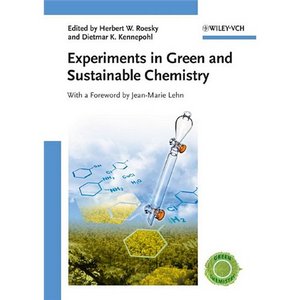Juglone (5-Hydroxy-1,4-naphthoquinone)
Joyce, Kieran, Coyle, Emma E., Mattay, Jochen, and Oelgemöller, Michael (2009) Juglone (5-Hydroxy-1,4-naphthoquinone). In: Roesky, Herbert W., and Kennepohl, Dietmar K., (eds.) Experiments in Green and Sustainable Chemistry. Wiley-Blackwell, Weinheim, Germany, pp. 199-203.
![[img]](https://researchonline.jcu.edu.au/17073/2.hassmallThumbnailVersion/17073_Joyce_et_al_2009.jpg)
|
Image (JPEG) (Book Cover)
- Cover Image
Download (38kB) |
|
|
PDF (Published Version)
- Published Version
Restricted to Repository staff only |
Abstract
It has been known for hundreds of years that herbal preparations of the leaves, bark, wood and husks of the walnut plant provide relief from bacterial and fungal diseases of the skin. However, the therapeutic agent, juglone, was not isolated until 1856 by Vogel and Reischauer [1]. Once it was isolated, studies began on juglone and its derivatives and a large number of therapeutic affects were discovered [2]. Today we know a lot about juglone, including its allelopathic activity and its cytotoxicity to plant, microbial, aquatic and mammalian life. Because of these properties, juglone is a versatile building block for the synthesis of biologically active compounds such as Urdamycinone B [3] and Frenolicin B [4]. However, a sufficient and especially a sustainable method for its synthesis has not yet been discovered. Existing methods include the chemical oxidation of naphthols. In particular, current methods use inorganic oxidants such as active manganese dioxide (MnO2) [5], sodium dichromate (Na2Cr2O7) [6], and thallium trinitrate (TTN) [7]. Periodic acid (HIO4) has also been used [8]. In most of these cases the yield has been low with the exception of that using TTN (yield ∼64%). However, despite the relatively low yields another more serious problem still remains. The reagents required are themselves highly toxic to the environment and the side products produced can also be extremely toxic. The following procedure has been researched in an effort to produce juglone via an environmentally friendly process. Juglone can be synthesized in good yield without the use or production of environmentally toxic chemicals if visible light and a common sensitizer (Rose Bengal) are used.
| Item ID: | 17073 |
|---|---|
| Item Type: | Book Chapter (Research - B1) |
| ISBN: | 978-3-527-32546-7 |
| Date Deposited: | 24 Aug 2011 22:36 |
| FoR Codes: | 03 CHEMICAL SCIENCES > 0305 Organic Chemistry > 030503 Organic Chemical Synthesis @ 50% 03 CHEMICAL SCIENCES > 0305 Organic Chemistry > 030504 Organic Green Chemistry @ 50% |
| SEO Codes: | 97 EXPANDING KNOWLEDGE > 970103 Expanding Knowledge in the Chemical Sciences @ 100% |
| Downloads: |
Total: 250 Last 12 Months: 3 |
| More Statistics |



